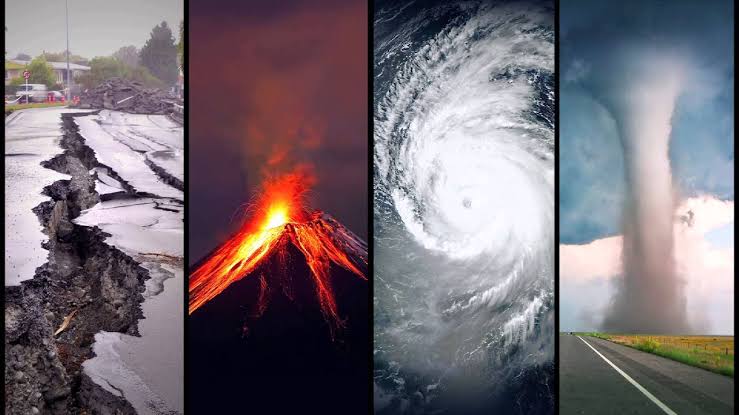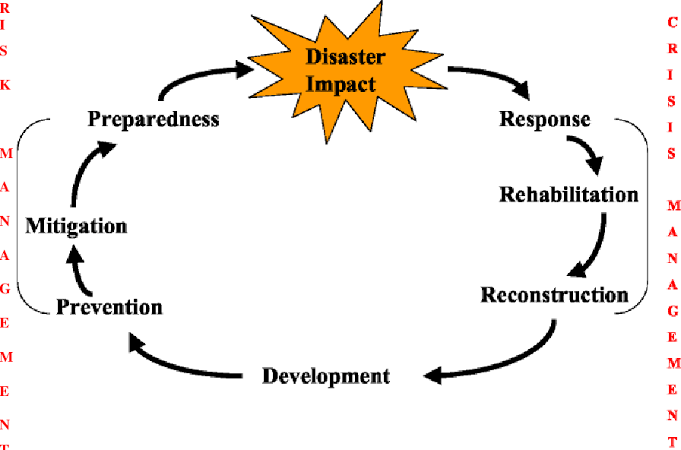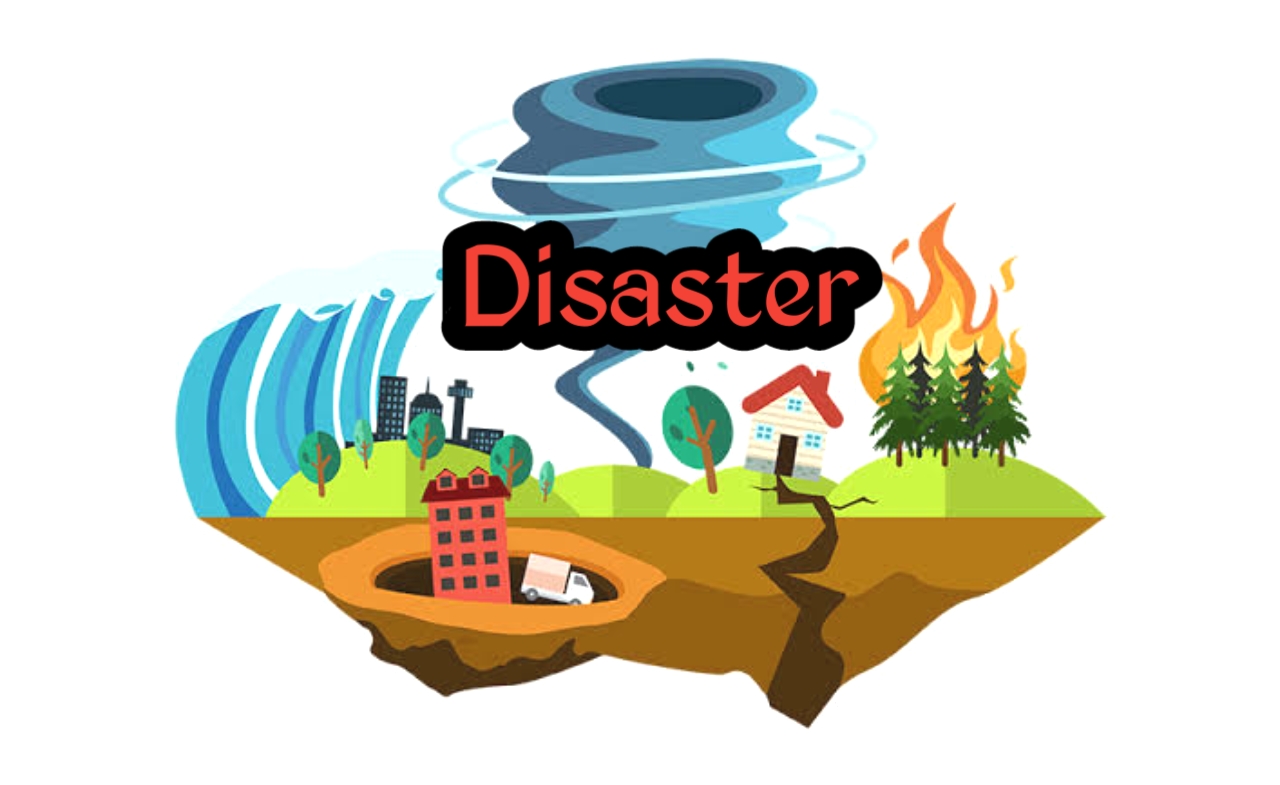প্রাকৃতিক দুর্যোগের কারণে ঝুঁকির মধ্যে থাকা শীর্ষ ১৫টি দেশের নাম প্রকাশ করা হয়েছে, যার মধ্যে রয়েছে বাংলাদেশের নাম ও।
সেই সূত্রে জেনে নেওয়া যাক Disaster কাক বলে।
🔴 Disaster– According to WHO( World Health Organization) , disaster is an occurrence that causes damage, ecological disruption, loss of human life or deterioration of health & health services on a scale sufficient to warrant an extraordinary response from outside the affected community or area.
🔴 Mass Disaster- According to WHo, ” it is a sudden ecological phenomenon of sufficient magnitude to require external assistance. ”
১৭-ই নভেম্বর ২০১৯ পাথরঘাটায় গ্যাস বিস্ফোরণে নিহত হন ৭জন। একে কি Mass disaster বলা যায়?
এই সংখ্যার গড়মিল যেন না হয় তাই দেওয়া হয় Mass disaster এর আরেকটি সংজ্ঞা।
🔴 Mass disaster– It is defined as death of more than 12 victims in a single events or in other words, where in single incidence the number of death exceeds the capacity of local death investigating authority to handle it.
🔴 Classification of mass disaster-
1) Natural &
2) Manmade (Due to acts of omission or commission)
Natural mass disaster: It can be subdivided into
A) Biological: Disease epidemic, e.g. Cholera. plague.
B) Non-biological:

I. Chemical: ↓ Mass poisoning (Consumption from naturally contaminated wells, e.g. Arsenic contaminated wells in some parts of the country. mass CO2 poisoning.
II. Others:
Avalanches
Blizzards
Cold wave
Cyclone
Drought
Earthquakes
Famines
Floods
Heat wave
Manmade mass disaster: It can be subdivided into

Accidental:
→ Airplane crashes
→ Building collapse
→ Dam bursts
→ Fires
→ Adulterated food (Causing food poisoning)
→ Adulterated liquor
→ Mining accidents
→ Stampedes in unruly crowds. e.g. places of worship like mecca, temples etc.
→ Transportation (Air, rail, river,
road, sea, waterways)
B) Civil disturbances: Riots & demonstrations
C) Industrial
→ Explosions
→ Fires
→ Leakage of toxic substances (Bhopal Methyl isocyanate gas disaster of 1984 in
India)
D) Terroristic:
→ Bombings
→ Special terroristic incidents like 9/11 World trade centre incident, 26/11 Mumbai incident.
Warfare: Chemical, Biological, radiological & nuclear (CBRN) warfare.
যখনি কোন Mass disaster হয়ে থাকে এতে অংশ নেয় একটি Team।
সেই Team এ থাকেন-
1) Forensic pathologist
2) Forensic odontologist
3) Forensic scientist
4) Ballistic experts
6) Other experts, relevant to the nature of disaster
জেনে নিই এই Investigation এর উদ্দেশ্য কি?
🔴 Purpose of investigation-
1) To identify the victims
2) To find out the causes of death for issuing death certificate
3) To discover & collect evidences related to the disaster, e.g. samples for topological analysis, fragments of detonators, bomb etc.
4) To find out the cause of disaster.
🔴 Procedure of investigation
1) First phase- At the disaster site.
2) Second phase- In the mortuary.
3) Third phase- Accident reconstruction.
🔯 First phase
Aims:
1) Rescue the survivors if any.
2) Triage- Triage is a system used by medical personnel to ration limited medical resources when the number of injuries exceeds the resources available.
3) Prepare a plan for disaster site- it is vital when debris & dead bodies ar scattered Over a large area.Main Pieces of wreckage, in relation to dead bodies must be charted. This often helps in identification.
4) Dead bodies
→Note location
→Label with a number
→Photograph
→Identify using all possible methods
🔯 Second phase
1) Location of bodies- Preferably in the same mortuary
2) Temporary mortuary- If one mortuary is not sufficient enough, a building of suitable size should be designated as temporary mortuary.
3) Refrigeration facilities- If not sufficient enough, bodies may be kept on ice slabs.
4) Team- Should be formed for PM. & ancillary investigations. The team consists of anthropologist, odontologist, pathologist, radiologist & toxicologist.
5) Disaster dentistry- Essential for identification
6) Post mortem
🔯 Third phase: This phase is a ” summing up” of02 phases. By combining the information derived from first & second phases, reconstruction of accident is sometimes possible. lt is better to have pre planning by the appropriate local authority ( Preferably the police) with decision taken in advance regarding the measures which can be utilized in the event of disaster situation of medium to considerable magnitude.
🔴 Management of mass disaster-

1) Isolation, demarcation & protection: By security cordon & entry of the team through predetermined route.
2) Identification & investigation: by
→ Visual recognition
→ Belonging including jewellery, clothing & personal documentation
→ Medical & X-ray evidence
→ Odontology
→ Fingerprinting
→ DNA profiling
3) Management of survivors: By establishing the system of triage. Color code token may be hung around the neck of the injured. The colors recommended are the following-
➡ Category 1 (Red)- Requiring resuscitation & emergency lifesaving surgery.
➡ Category 2 (Yellow). Requiring possible resuscitation & early surgery ➡ Category 3 (Green)- Less serious injury not endangered by delay
➡ Category 4 (Black)- Survival not likely
The expertise in relation to mass disaster management is enhanced when team members working together in an interdisciplinary way, share mutual respect, are professionally trained & skilled and have multifunctional facilities.
Disaster doesn’t only affect the human life but also affects the ecological and economical system.
🔴 Let’s know about the consequences of disaster–
1.Health
↓Physical- Entanglement, injuries, disabilities, coma, death.
↓ Psychological- Cognitive, Behavioral & social.
- Structural damage- To variable extent
- Ecological- changes in eco system.
- Economical- Financial loss.
🔴 Symptoms after disaster:
1) Physiological symptoms- Fatigue, shock, profuse sweating, fine motor tremors, chills, teeth grinding, muscle aches, dizziness.
2) Cognitive symptoms- Memory loss, distractibility, reduced attention span, decision making difficulties, calculation difficulties, confusing trivial with major issues.
3) Emotional symptoms- Anxiety, feeling overwhelmed grief, identification with victims, depression, anticipation of harm to self or others, irritability, behavorial symptoms, insomnia, substance abuse, gallows humour, gait change, ritualistic behaviour, hypervigilance, unwillingness to leave scene.
Reference: R. N. Karmakar 3rd- 534
Platform Academia/
Monadia chowdhury
Southern medical college
2017-2018

